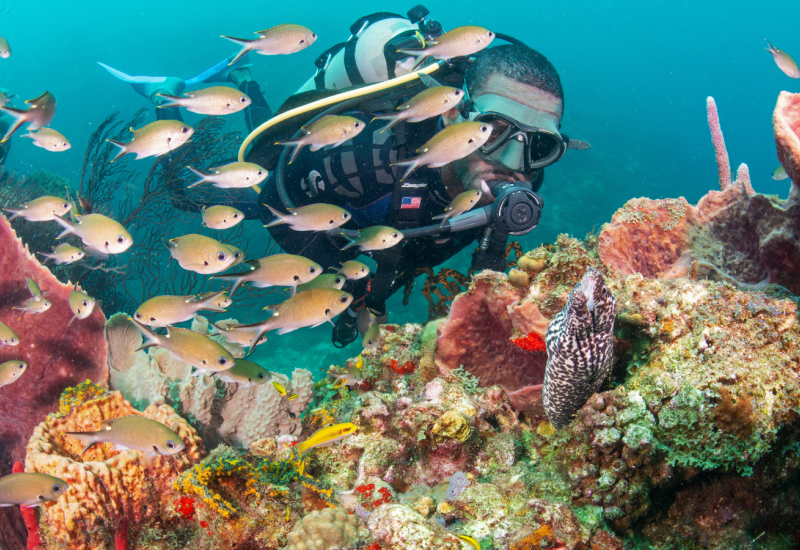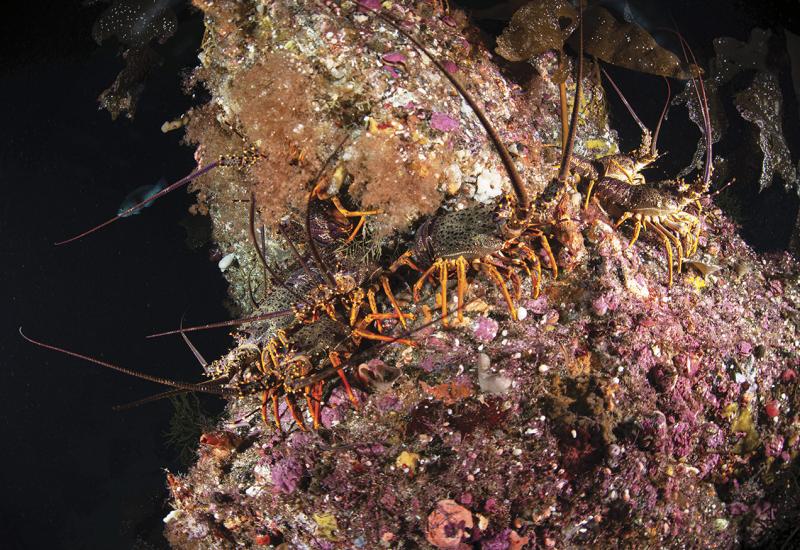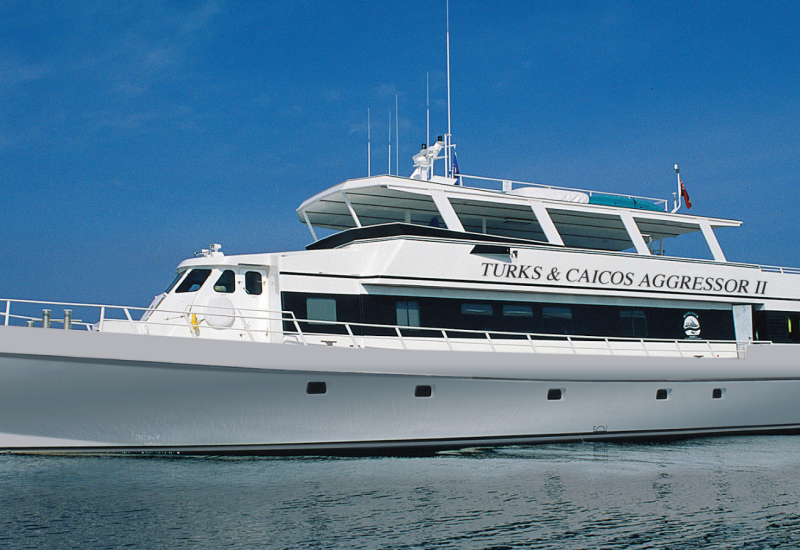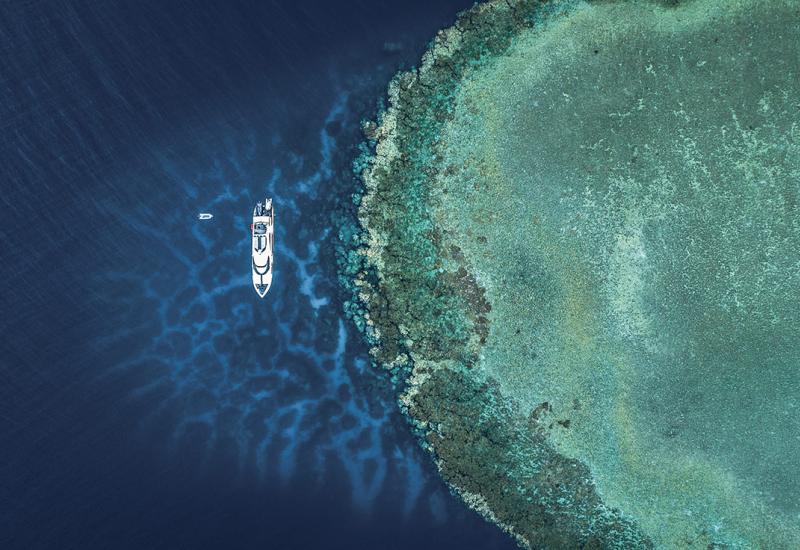Scuba Diving in Baja and the Sea of Cortez
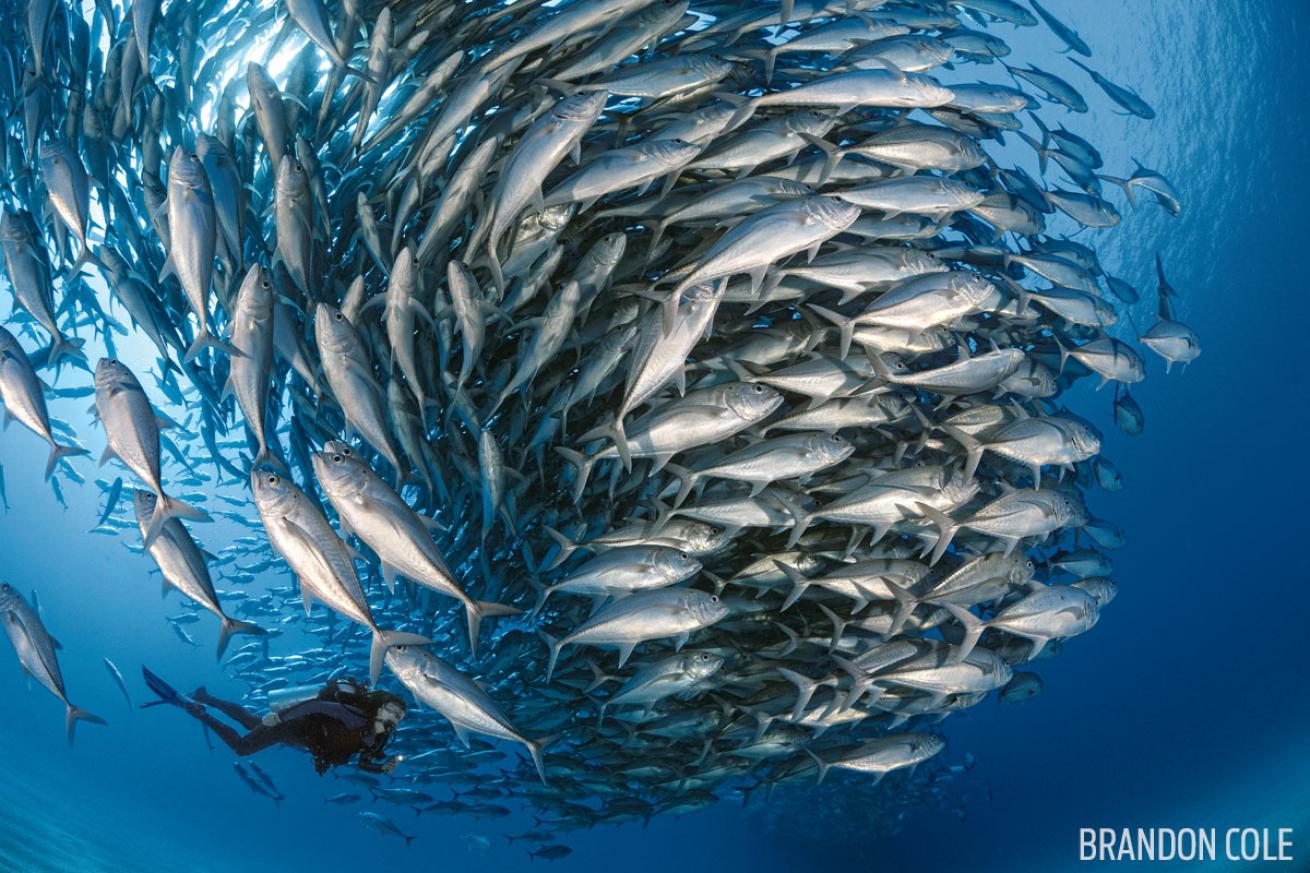
Brandon ColeThere are schools, and then there's Cabo Pulmo.
There are schools, and then there’s Cabo Pulmo. Picture a spinning Death Star-size mass of muscular bigeye jacks, an impossibly large sphere of eyes and scales and forked tails. Thousands upon thousands move as one, a spawning aggregation linked by undersea telepathy. Kneeling in the sand 60 feet down, we’re cloaked in shadow created by the spectacle overtop. Mesmerized, all we want to do is watch, but who’s going to believe the magnitude of this biomass if we don’t take pictures? We ascend into their midst and disappear from sight.
Back on board the panga, our divemaster Marisa jokes with me. “Your mouth must have been full of seawater. I saw your huge smile! Your reg kept dropping out.” I’m speechless, and still smiling.
Frank, a diver here for a weekend escape from Southern California’s rat race, quips in his surfer’s drawl, “Waaay cool.” Our friend Hedrick exclaims: “Unbelievable! And to think our skipper found the jureles by smell!” Hugo had indeed navigated to the jacks not with GPS but with his nose, catching a subtle, oily whiff on the gentle morning breeze. Pulmo natives seem magically connected to the sea.
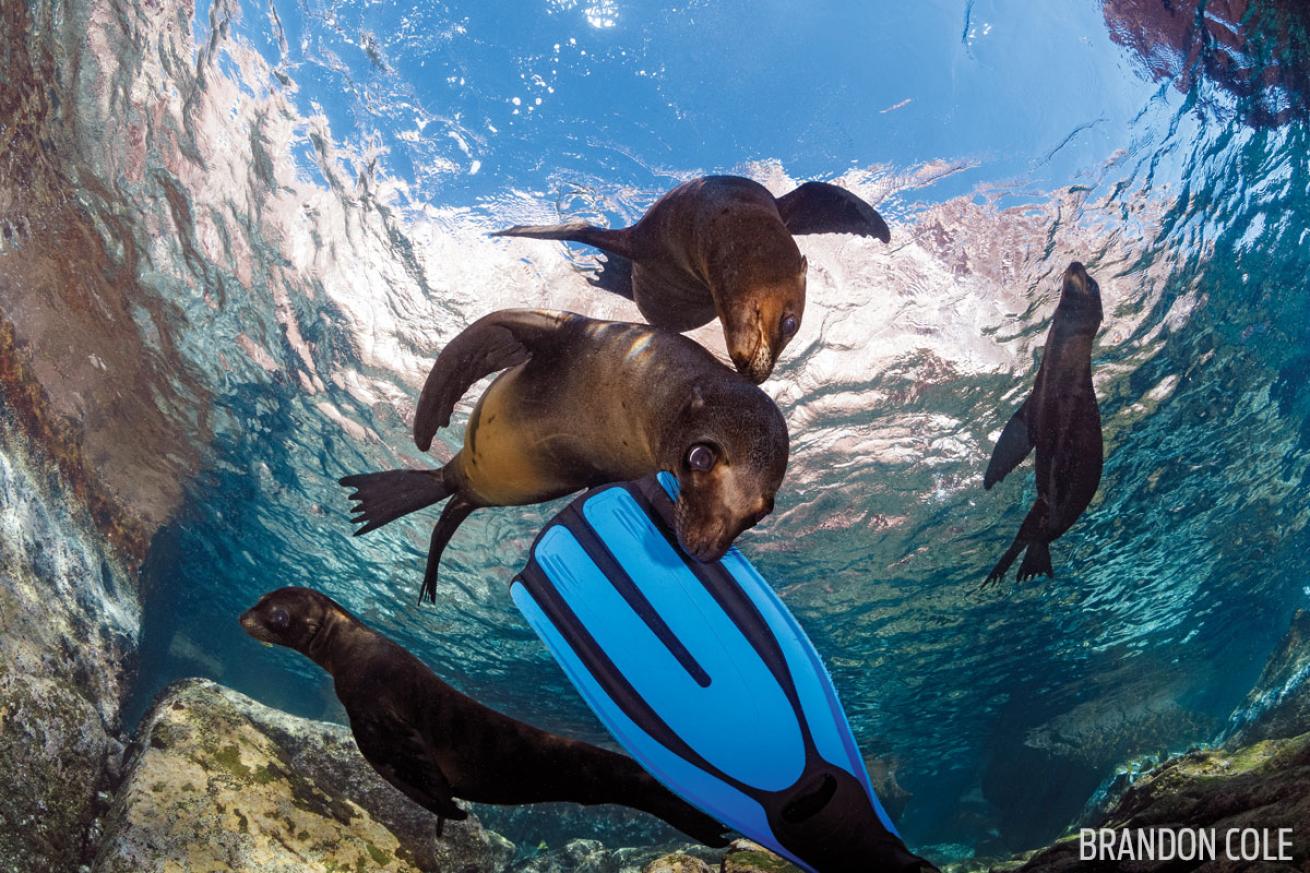
Brandon ColeFriendly sea lions play with divers in Baja.
This singular school of jacks — not to mention the turtles, lunker grouper and snapper, squadrons of rays, and the odd bull shark kicking around the graceful sweep of this idyllic bay along Baja’s east cape — is living proof that protection works. Just a two-hour drive from bustling Cabo San Lucas, Cabo Pulmo National Park is a world away, and an internationally recognized conservation success story. It’s an example of what can be achieved when a committed local community changes gears from extraction to protection, safeguarding their home waters for the future.
One day chilling in sleepy, charming Cabo Pulmo and thrilling on the nearshore reefs is hardly enough, but we have a date with mobulas out of La Paz tomorrow night. And a reunion with old sea lion pals. We pile into our well-used rental car and bounce down Pulmo’s dusty main drag, waving to friendly faces. Ahead awaits a beautiful drive weaving north through Baja desert, red rocks glowing in the afternoon sun — and killer cheap tacos served streetside. And, of course, the promise of more great diving. As they say, “There’s something in the water” — taste the Sea of Cortez once, and you’ll be back again and again.

Brandon ColeLa Salvatierra shipwreck has multihued tropical fish, eels, octopuses, and sometimes a seahorse.
DIVES
La Paz Faves: We finish our long weekend with dives at La Salvatierra shipwreck and the nearby coral reef that sank it, Suwanee Reef. Both have multihued tropical fish, eels, octopuses, and sometimes a seahorse.
Pulmo: Perfection After losing ourselves among the jacks, we explore the fishy Vencedor shipwreck, then El Cantil reef. Decorated with colorful sea fans and gorgonians, it’s a ridge shaped like layered lasagna on its side.
Los Islotes: The world’s friendliest fin-nibbling, camera-hogging sea lions and their pups await you north of Espiritu Santo Island. Schooling scad mackerel and diving cormorants sometimes make an appearance.
Mobula Night Dive: Part of Fun Baja’s tented overnight scuba safaris — on a desert island — this shallow dive defies description. Imagine being swarmed by hundreds of 3-foot-wide bats. Use video to capture the insane action.

Brandon ColeOctober to March, snorkel La Paz Bay as whale sharks feed near the surface.
Surface Intervals
Play: October to March, forget golfing and go whale sharking. Snorkel La Paz Bay as the world’s largest fish feeds near the surface, sucking up plankton.
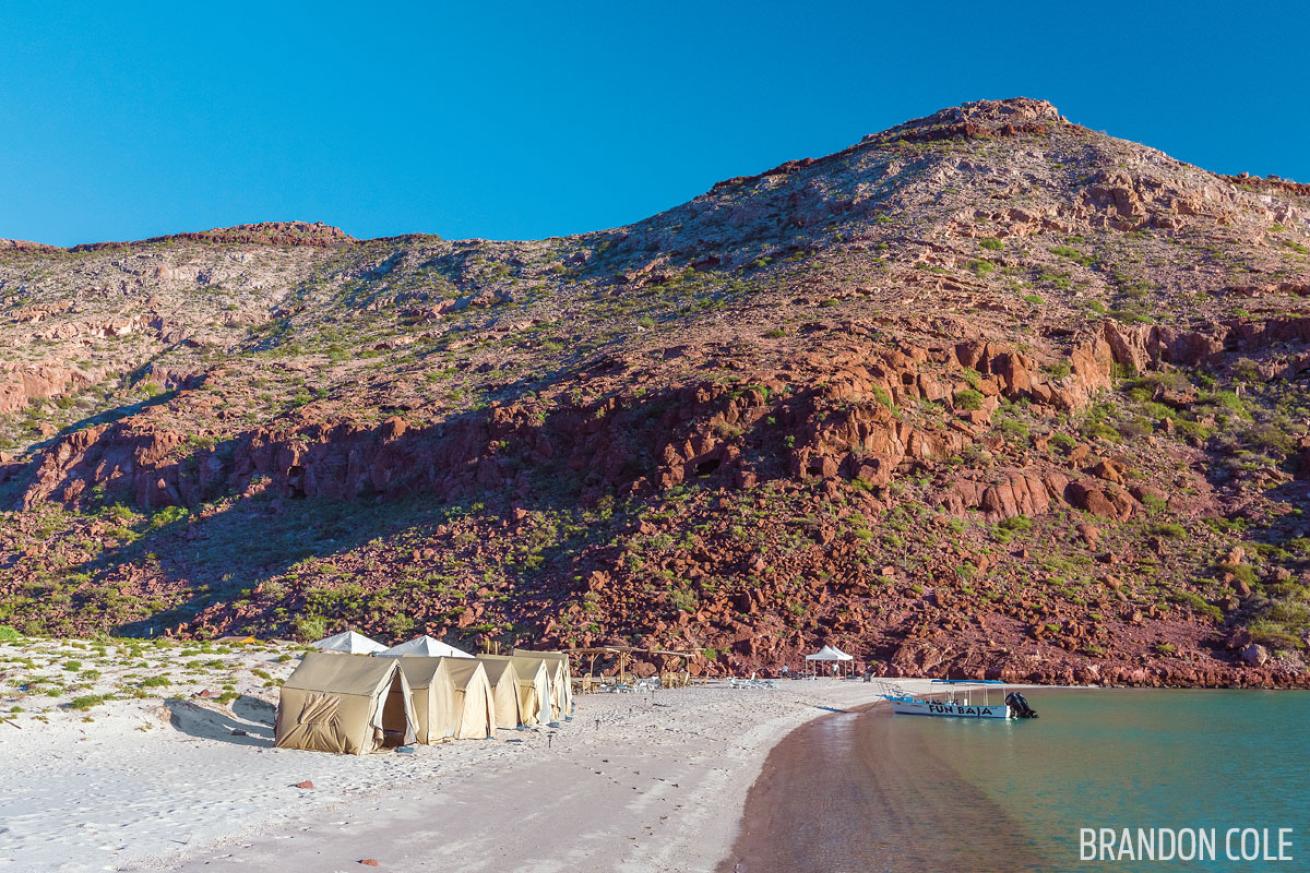
Brandon ColeUnplug and unwind at Fun Baja’s camp on Espiritu Santo Island.
Eat: Enjoy authentic Mexican at El Caballero in Cabo Pulmo. Maribel’s family will look after you. Feast on machaca and chilaquiles for breakfast, and fish tacos and mole for lunch and dinner.
Sleep: Unplug and unwind at Fun Baja’s camp on Espiritu Santo Island. Kick back under a cactus and stare up at the stars before drifting off to sleep in your own beachside tent.
DIVE GUIDE
Dive: Year-round
Water Temps: Low 70s in winter and spring to mid- to high 80s in late summer and fall. (In May/early June, temps occasionally might dip to 60 in Cabo Pulmo.)
What to Wear: A full 5 mm wetsuit in winter, and 3 mm or a skin in summer.
Visibility: 20 feet to over 100, depending on dive site and season
Travel Tip: If you have the time, the hourlong drive to magical Todos Santos, an artists colony brimming with galleries and gourmet cafes on Baja’s Pacific Coast, is totally worth it.
MORE MEXICO
Cabo Dive Guide: Scuba Diving in Los Cabos, Mexico
Scuba Diving With Humboldt Squid
Capturing Sun Rays in the Yucatan’s Cenotes

